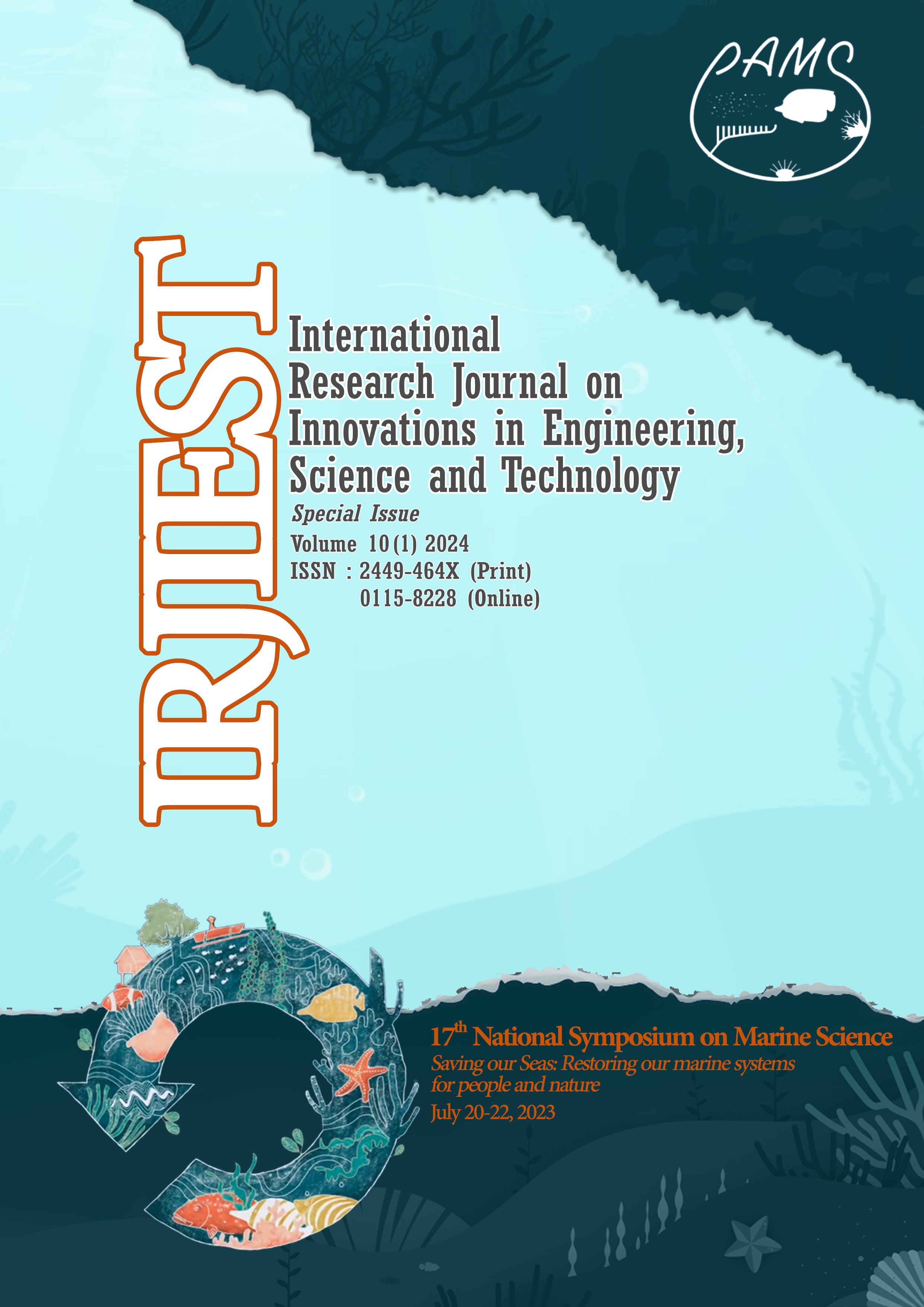Assessing microplastic contamination in typical coastal waters: Evidence from sediments, surface water, and fish
Keywords:
fibers, film, foam, fragments, microplastics, pelletsAbstract
Plastic pollution is one of the most well-known anthropogenic pressures in the marine environment. Since plastic does not truly biodegrade, it breaks down into tiny pieces known as microplastics (MP), which account for a sizable number of tons of trash in the oceans. The study was conducted to observe MPs obtained from three different samples, such as sediment, surface water, and fish at Aplaya, Bauan, Batangas, Philippines. Apart from this, it aimed to know the difference among the types and number of MPs in the samples in the said location. The samples were collected within three consecutive sampling periods within a month. Specific amounts of chemicals were used based on the sample size of each sample, which helped digest the organic matter, wherein potassium hydroxide (KOH) was used for sediment and surface water. Whereas KOH, hydrogen peroxide (H2O2), and Iron (II) sulfate (FeSO4) were used for fish samples. It was observed that there is a high number of fragments, a small amount of foam, and no pellets at all in three samples. A total of 452 MP pcs were recorded in sediment, 321 pcs in fish, and 98 pcs in surface water. Proper disposal of glass bottles should be utilized, as fragments have the highest number found in all samples. Further study about MPs is recommended to come up with a newer method to identify MPs in terms of their form, composition, and type.
Downloads
Published
How to Cite
Issue
Section
License
Copyright (c) 2025 International Research Journal on Innovations in Engineering, Science and Technology

This work is licensed under a Creative Commons Attribution-NonCommercial-NoDerivatives 4.0 International License.

